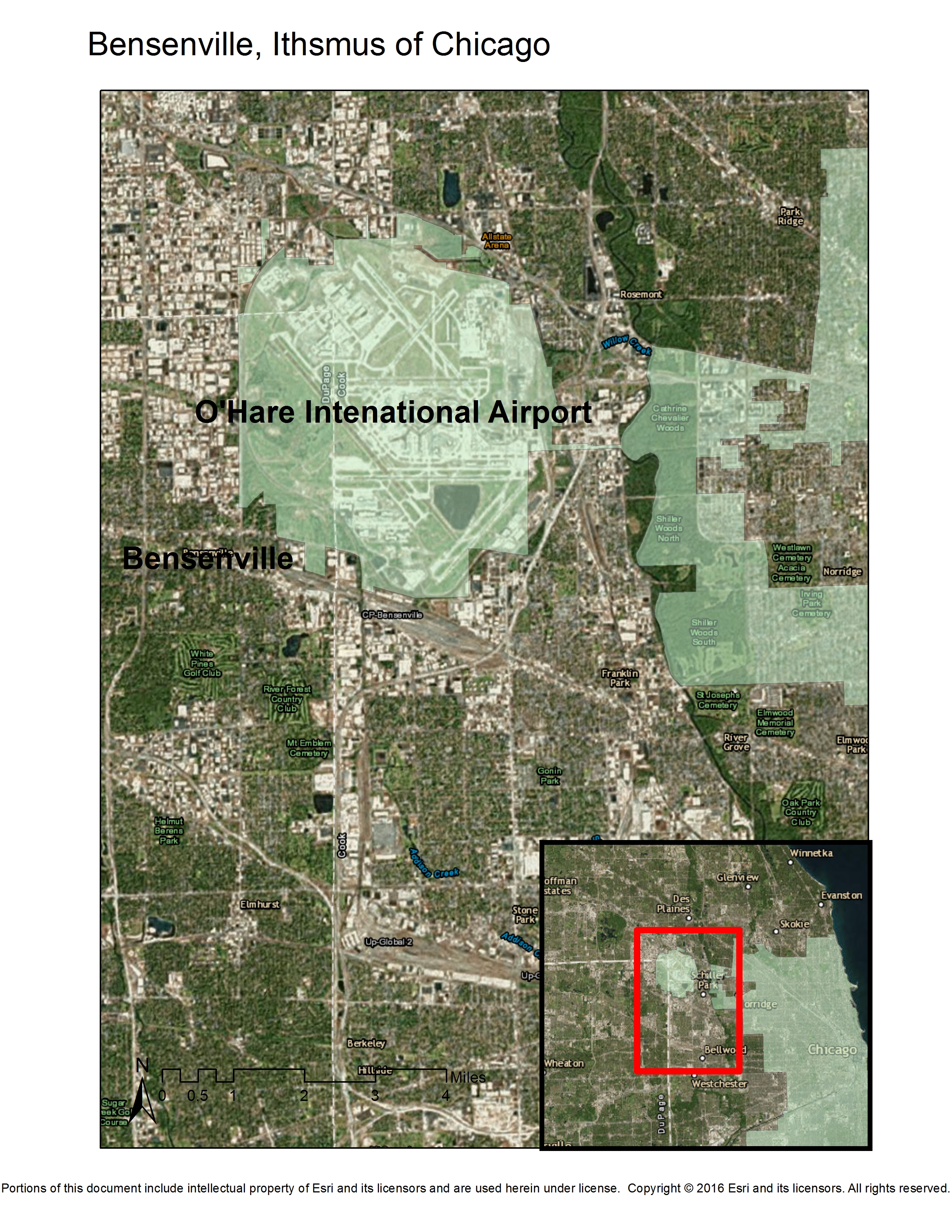City versus suburbs
The early objections to the takeover of rural land for an airport and airplane factory were only signs of conflicts to come. Although the urgency of war production needs easily trumped any desire to save orchards, more battles around airport expansion were to rear up in ensuing years. In the late 1940s and early 1950s, tensions between Chicago and nearby suburbs over expansion of O’Hare increased. Airport historian Ian Petchenik explains,
"In the late 1940s and early 1950s the city of Chicago purchased over 5,000 acres, including 14 acres belonging to St. John’s Church. The St. John’s cemetery remained active on airport property, but a cemetery belonging to the Evangelical Zion Society was moved in 1951 in order to accommodate a runway extension. Many of the land acquisitions were contentious and involved protracted legal proceedings, but Chicago was able to procure the land that it needed for O’Hare.[1]"
Throughout the mid-1950s the City of Chicago negotiated with airlines over moving more flights from Midway Airport to the expanding O’Hare. Ultimately successful, the City also wanted to ensure its control over the airport and its expanding revenues. Using powers of annexation, commonly used by many U.S. municipalities in expanding and consolidating control over larger portions of their metropolitan areas, the City of Chicago made multiple annexations between 1956 and 1961, creating a narrow isthmus of land connecting the western boundary of the city to the airport.[2] Justified as an efficient way of connecting the airport to city services such as water and sewage, the connection was further strengthened by the building of the Kennedy Expressway and the Chicago Transit Authority (CTA) extension. Interestingly enough, the first annexation step in March 1956 was done in the second year of Richard J. Daley’s 21-year tenure as mayor of Chicago.[3] Almost 50 years later it would be his son, Richard M. Daley, who would oversee the contentious runway expansion of the airport.

[1] Petchenik. 2014a.
[2] Amanda Seligman, “O’Hare,” in Ann Durkin Keating, Ed., Chicago Neighborhoods and Suburbs: A Historical Guide. Chicago: University of Chicago Press, 2008, pp 247-248.
[3] Chicago Tribune. “Council Votes to Add O’Hare Field to City.” March 29, 1956. http://archives.chicagotribune.com/1956/03/29/page/1/article/council-votes-to-add-ohare-field-to-city

